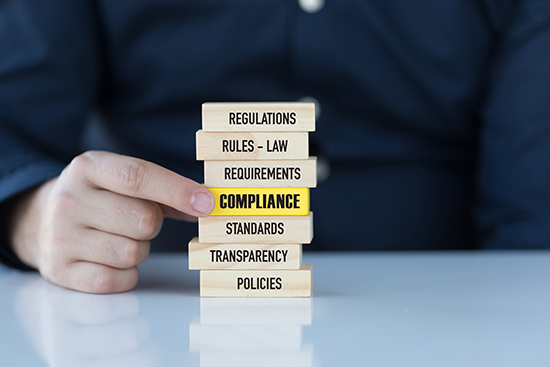Since the onset of the pandemic, organizations have needed to continually find ways to meet their mission while keeping staff and the individuals they serve safe from harm. The details resulting from changes may vary by organization, but in general have focused around increased infection control, improved emergency management plans, and changes to programs and service lines. Many of you have heard of, or may have implemented, new programs around modifications or closures, staff working remotely, and the broad adoption of telehealth services, with a resulting impact on funding and reimbursement.
As the world adjusts to a new, post-pandemic “normal”, the framework provided by implementing national accreditation standards can help guide service providers to better manage operations and service delivery in the still-shifting environment.
- Accreditation Standards – A Framework for Success
Accreditation (maintenance and preparation) guides an organization through a thoughtful, structured, and planned process to create an infrastructure for risk management and performance improvement that can be seamlessly implemented during times of crisis.
Accreditation standards that address risk prevention and management, infection prevention and control, performance and quality improvement, technology use and information management, as well as staff training, offer detailed guidance that can help organizations create management plans to prosper under the new normal.
Emergency response preparedness is a part of risk management, and accreditation standards provide a framework for creating and implementing these plans.
Effective risk management practices improve organization-wide safety for staff and individuals served, and may offer organizations an opportunity to renegotiate lower liability insurance rates. Accrediting organizations will be looking closely at COVID and other emergency management plans during surveys now. This can be an opportunity to ask questions of your reviewers to help hone your plans and pick up good practices they have seen from other similar organizations.
Creating processes for gathering and using data to continuously improve the quality of services provided is a core element of the performance and quality improvement focus of accreditation.
It is not enough to collect and analyze data related to outputs such as the number of clinical sessions provided or the total number of clients served – they also must identify, observe, and measure the effects of a program’s services on clients. For organizations dealing with third-party payors, this data can be helpful as a basis for improved contracting, faster payment approvals or even in-network standing to improve reimbursement options.
- Technology-Based Service Delivery – Here to Stay?
Due to the pandemic and resulting COVID-19 funding legislation that expanded coverage for telehealth services for Medicaid and Medicare beneficiaries, many service providers shifted to employees working remotely and the agency providing services electronically, also known as telehealth.
Because of risk management practices established via accreditation, many organizations were able to quickly adopt and implement the framework of telehealth, but also address core competency issues for staff. Additionally, privacy and security measures, monitoring effectiveness of using this model, and training staff in recognizing and responding to emergency, or crisis, situations remotely are just a few of the policies and procedures addressed.
As the future of the pandemic remains unclear, organizational funding fluctuates, and the changing needs of the individual served continue – programs and services will need to keep pace by evolving as well. Accreditation standards can speed adoption of program and service line changes, by providing solid evidence-based policies and practices at your fingertips.
- Reassuring Community of your Commitment to Quality
The three major accrediting bodies for human service organizations (CARF International, Council on Accreditation and The Joint Commission) research and develop their unique set of accreditation standards that address a commitment to helping child welfare and behavior health care organizations provide safe and high-quality care, treatment or services. Applying the accreditation standards is a mark of distinction that often leads to an increase in consumer confidence in service delivery. In the post-pandemic period, confidence in care providers may need a boost. Read “Increasing Consumer Confidence Through Accreditation“.
- Evolving for Support and Safety
All three national accrediting bodies have evolved their on-site review processes over the last many months to incorporate a virtual option in an effort to keep your staff, and theirs, as safe as possible and to minimize disruptions and safety concerns. They also maintain COVID resources and responses, such as FAQ’s, posted on their websites* to assist organizations through the many challenges of the pandemic. As conditions change, accreditation organizations will continue to be a resource for communication of best practices.
As the pandemic waxes and wanes and organizations start to develop a “new normal” for meeting their missions, accreditation can provide access to guidance, resources and a framework to weather the ups and downs without sacrificing safety or quality of care.
Is your organization on the path to accreditation? Don’t delay your preparation for achieving accreditation. Scheduling time to focus on accreditation lets you address key initiatives now to stay ahead of the game in the future. Develop a work schedule that includes accreditation preparation whether you are applying for the first time or maintaining your accreditation status.
Accreditation Guru can help guide you through the preparation process through knowledgeable, experienced, and efficient consulting. We’d love to hear from you – reach out to us for more information.
*For additional information on COVID from the accrediting bodies:
CARF International
COA “Preparing for Response to COVID-19”
The Joint Commission










